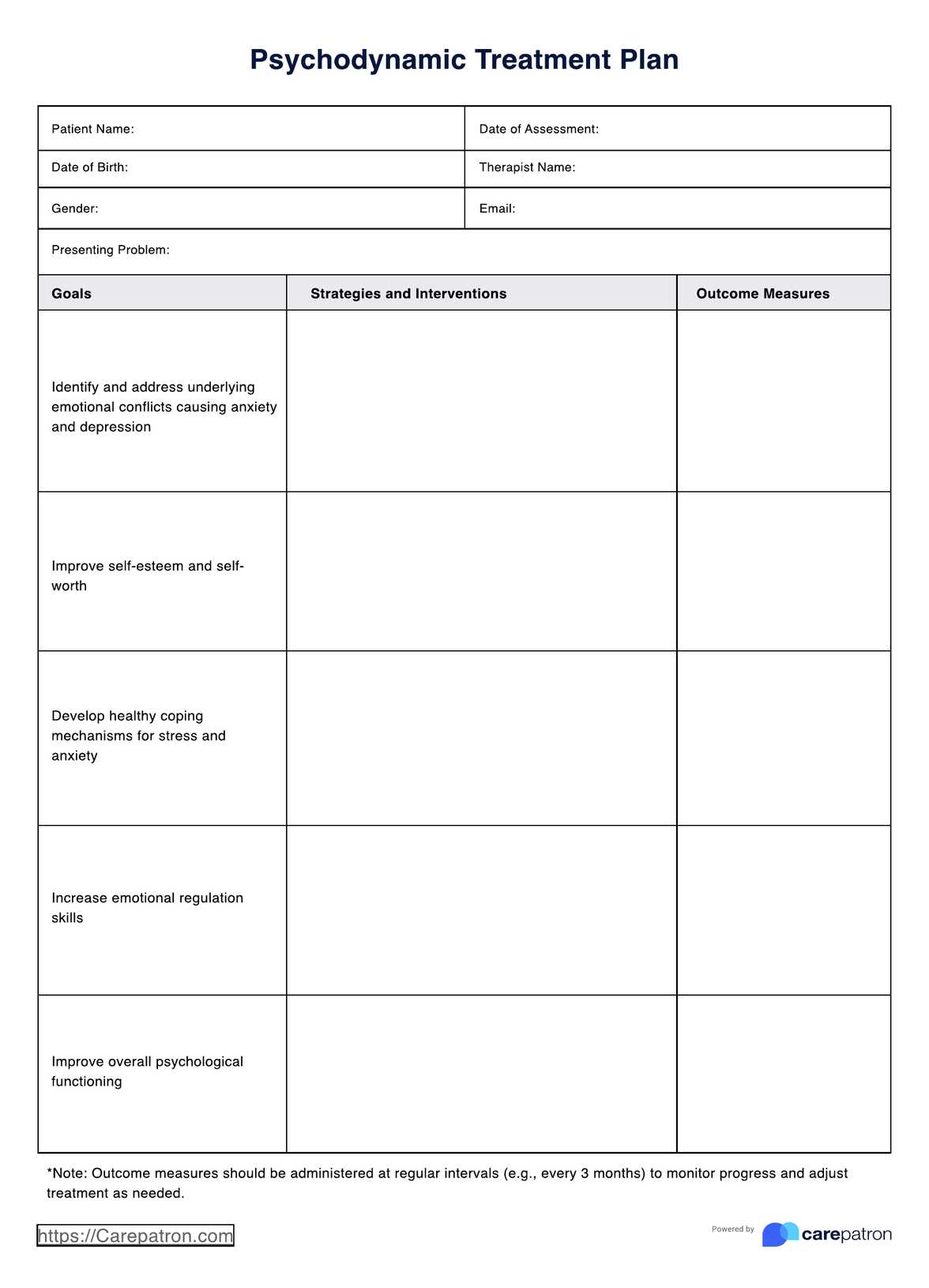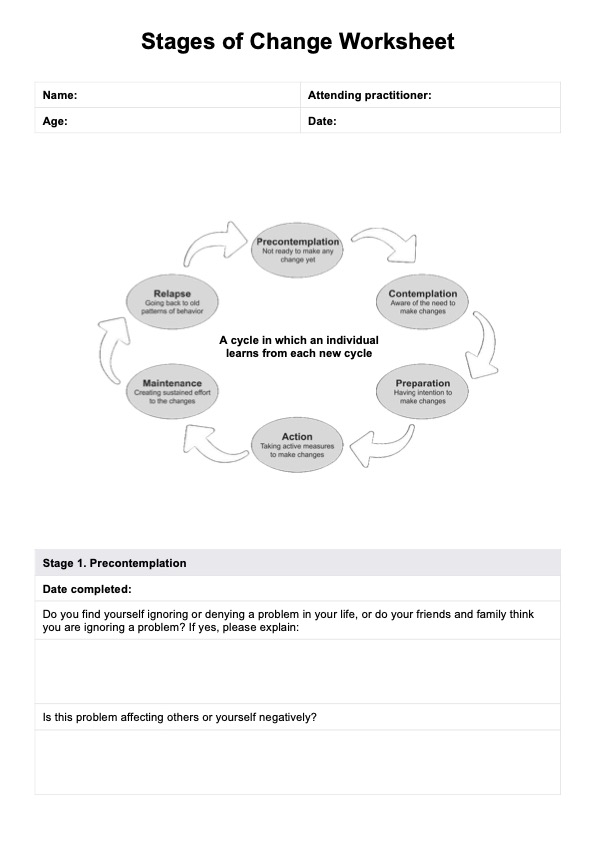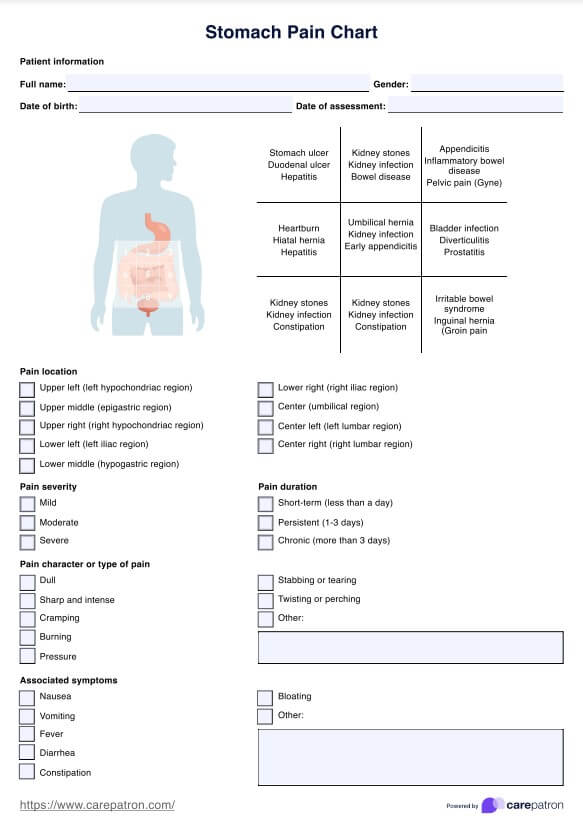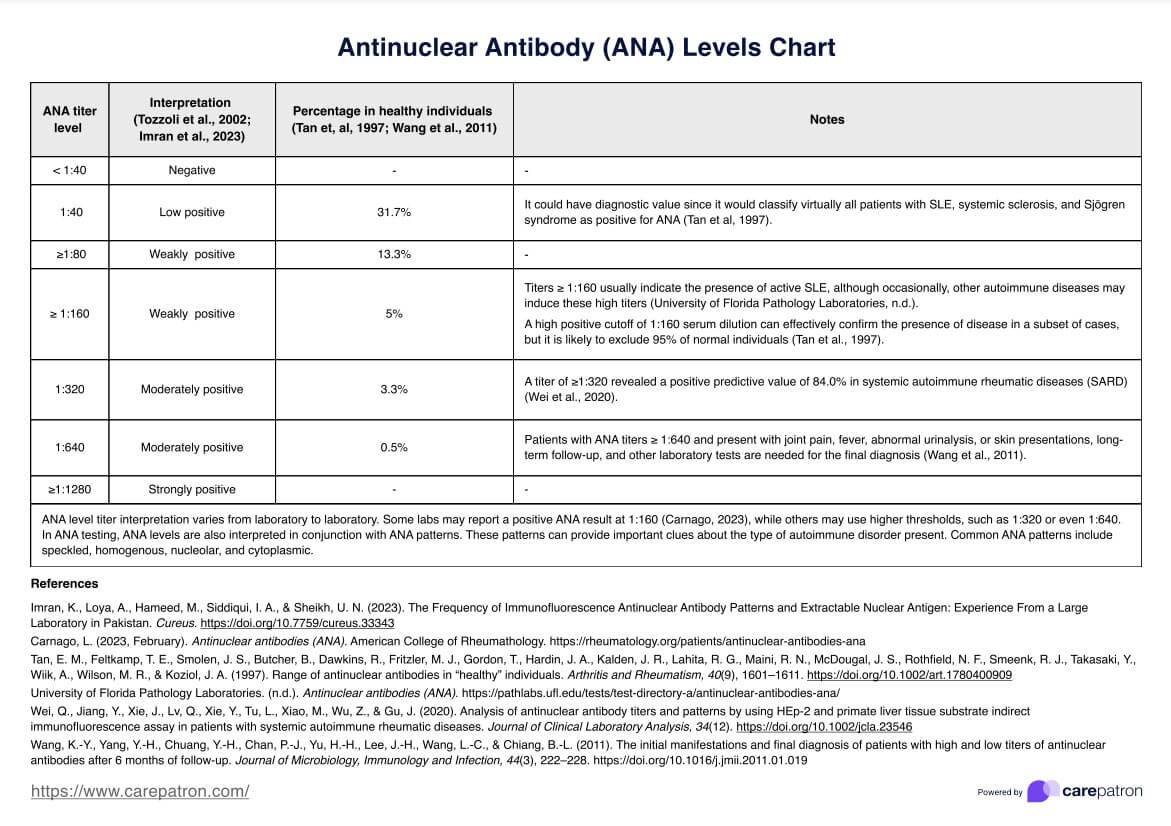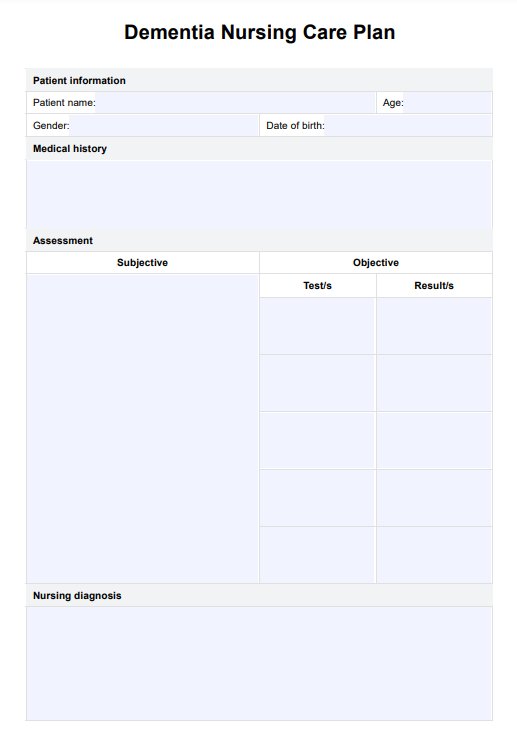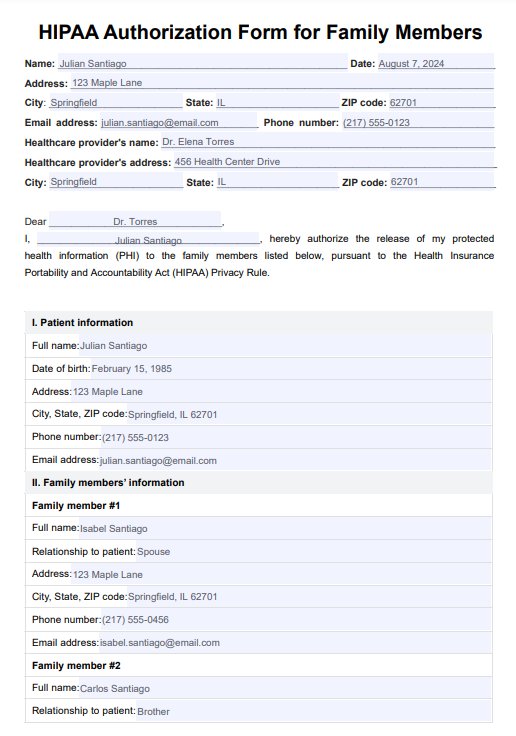Electrolyte Panel
Get insights into your health with an Electrolyte Panel Test. Measure vital electrolyte levels for a comprehensive health assessment.


What is an Electrolyte Panel Test?
An is a diagnostic blood test that measures the levels of specific electrolytes in the body. Electrolytes are essential minerals that carry an electric charge and play crucial roles in various physiological functions, including maintaining proper fluid balance, regulating muscle contractions, and supporting nerve function. The most commonly measured electrolytes in an electrolyte panel test include sodium (Na+), potassium (K+), chloride (Cl-), and bicarbonate (HCO3-).
Here's a brief description of the key electrolytes measured in an electrolyte panel:
- Sodium (Na+): Sodium regulates fluid balance and blood pressure. Abnormal levels can indicate dehydration, kidney problems, or hormonal imbalances.
- Potassium (K+): Potassium is essential for nerve and muscle cell function. Abnormal levels can lead to muscle weakness, irregular heart rhythms, and other health issues.
- Chloride (Cl-): Chloride is often measured alongside sodium to assess the body's electrolyte balance. Abnormal levels can indicate various conditions, such as kidney dysfunction or respiratory problems.
- Bicarbonate (HCO3-): Bicarbonate helps regulate the body's pH levels. It is primarily produced and controlled by the kidneys and lungs. Abnormal levels may signal issues with acid-base balance.
Healthcare providers typically order an electrolyte panel test to diagnose and monitor conditions like dehydration, kidney diseases, heart conditions, lung diseases, and acid-base imbalances. It can also help assess the effectiveness of treatments and medications to correct electrolyte imbalances.
The test involves drawing a blood sample from a vein, and the results are typically reported in millimoles per liter (mmol/L). Healthcare professionals use the results to identify electrolyte abnormalities and develop appropriate treatment plans to restore balance.
Electrolyte Panel Template
Electrolyte Panel Example
How does it work?
1. Patient Registration
The patient arrives at a healthcare facility or laboratory for the Electrolyte Panel Test. For registration, the patient provides personal information, such as name, date of birth, and contact details.
2. Requisition Form Completion
A healthcare provider or laboratory staff provides the patient with a requisition form specific to the Electrolyte Panel Test. The patient or a healthcare professional fills out the form, including relevant medical history, symptoms, and the reason for the test.
3. Sample Collection
The healthcare provider or phlebotomist collects a blood sample from the patient. This is usually done by inserting a needle into a vein, typically in the arm.
4. Sample Labeling
The collected blood sample is carefully labeled with the patient's information, including name, date of birth, and a unique identifier.
5. Sample Transportation
The labeled blood sample is securely transported to the laboratory for analysis. Proper handling and storage are essential to maintain the integrity of the sample.
6. Laboratory Analysis
A trained technician processes the blood sample in the laboratory using specialized equipment. The sample is analyzed to measure the concentrations of specific electrolytes, such as sodium, potassium, chloride, and bicarbonate, in millimoles per liter (mmol/L).
7. Reporting Results
The lab report contains patient details, reference ranges, and measured values. Abnormalities are flagged, and healthcare providers interpret results based on medical history and symptoms.
8. Consultation with Healthcare Provider
The healthcare provider may recommend further tests, treatments, or lifestyle changes based on the test results to address any underlying medical conditions or electrolyte imbalances.
9. Medical Records
Test results and related information are documented in the patient's medical records for future reference and health tracking, ensuring accurate testing and informed medical decisions for patient well-being.
When would you use this test?
The Electrolyte Panel Test is a valuable diagnostic tool healthcare practitioners use to assess and monitor a patient's electrolyte balance in various medical settings. Here are some critical scenarios and medical conditions in which this test is commonly employed:
- Dehydration Assessment: Healthcare providers may use the Electrolyte Panel Test to evaluate electrolyte levels in cases of suspected dehydration. Low levels of electrolytes, such as sodium and chloride, can indicate dehydration, helping clinicians determine the severity of the condition and plan appropriate hydration therapy.
- Kidney Function Evaluation: The test is crucial in assessing kidney function. Abnormal electrolyte levels, particularly elevated potassium or reduced bicarbonate, may indicate kidney dysfunction or disease. Monitoring these levels helps healthcare providers manage patients with chronic kidney conditions.
- Cardiac Health: Cardiologists use the Electrolyte Panel Test to assess electrolyte imbalances, particularly potassium and calcium, which can affect heart rhythm. Abnormalities in these electrolytes may lead to arrhythmias; correcting them is essential for cardiac patients.
- Respiratory Disorders: The test can provide insights into acid-base imbalances in respiratory illnesses like chronic obstructive pulmonary disease (COPD) or metabolic alkalosis. Elevated bicarbonate levels may suggest respiratory compensation and guide treatment decisions.
- Endocrine Disorders: Endocrinologists may utilize this test to assess electrolytes in patients with endocrine disorders, such as Addison's disease, Cushing's syndrome, or primary hyperaldosteronism, as these conditions can disrupt electrolyte balance.
- Critical Care Settings: In intensive care units (ICUs), the Electrolyte Panel Test is routinely used to monitor electrolyte levels in critically ill patients. Maintaining proper electrolyte balance is essential for patients with severe illnesses, as imbalances can lead to complications.
- Medication Management: Some medications, like diuretics or certain antibiotics, can affect electrolyte levels. Physicians may order the test to monitor patients on such drugs and adjust treatment as needed.
What do the results mean?
Interpreting the results of an Electrolyte Panel Test is essential in understanding a patient's overall health and identifying potential medical issues. Here are some common results and their meanings:
Sodium (Na+)
- Normal Range: 135-145 mmol/L
- High Sodium (Hypernatremia): Elevated sodium levels may indicate dehydration, excessive salt intake, or underlying conditions like diabetes insipidus or Cushing's syndrome.
- Low Sodium (Hyponatremia): Reduced sodium levels can result from fluid overload, kidney problems, hormonal imbalances, or certain medications. It can lead to symptoms like confusion, muscle cramps, and seizures.
Potassium (K+)
- Normal Range: 3.5-5.0 mmol/L
- High Potassium (Hyperkalemia): Elevated potassium levels can result from kidney dysfunction, certain medications, or severe tissue injury. It may cause muscle weakness, irregular heart rhythms, and cardiac arrest.
- Low Potassium (Hypokalemia): Reduced potassium levels can occur due to diuretic use, kidney issues, or excessive vomiting or diarrhea. Symptoms may include muscle weakness and abnormal heart rhythms.
Chloride (Cl-)
- Normal Range: 96-106 mmol/L
- High Chloride (Hyperchloremia): Elevated chloride levels are often associated with dehydration, kidney dysfunction, or respiratory alkalosis.
- Low Chloride (Hypochloremia): Reduced chloride levels can be seen in conditions like metabolic alkalosis or chronic respiratory acidosis. It is often linked to an underlying acid-base imbalance.
Bicarbonate (HCO3-)
- Normal Range: 22-28 mmol/L
- High Bicarbonate (Hyperbicarbonatemia): Elevated bicarbonate levels may occur in conditions like metabolic alkalosis, respiratory acidosis, or chronic vomiting.
- Low Bicarbonate (Hypobicarbonatemia): Reduced bicarbonate levels are often seen in metabolic acidosis, kidney dysfunction, or severe diarrhea.
Interpreting the results of an Electrolyte Panel Test requires considering the patient's medical history and symptoms. Abnormalities may indicate underlying conditions, such as kidney disease, dehydration, electrolyte imbalances, or respiratory issues. Healthcare providers use these results to tailor treatment plans and address each patient's needs, striving to restore electrolyte balance and overall health.
Research & Evidence
The Electrolyte Panel Test has a rich history backed by extensive research and evidence supporting its use in clinical practice.
The study of electrolytes and their importance in physiology dates back to the 18th century when scientists began to recognize the role of electrically charged ions in various bodily functions. Electrolyte measurements in the clinical context began to gain prominence in the 20th century with the development of more accurate and precise laboratory techniques.
The emergence of automated clinical chemistry analyzers in the mid-20th century significantly improved the efficiency and accuracy of electrolyte measurements, making routine testing more accessible.
Clinical studies and research have consistently shown the clinical utility of the Electrolyte Panel Test in diagnosing and managing a wide range of medical conditions. Research has established electrolyte reference ranges, allowing healthcare providers to interpret results and identify abnormalities.
Studies have demonstrated the critical role of electrolytes in maintaining physiological functions. For example, sodium and potassium are essential for nerve cell communication and muscle contraction, while chloride and bicarbonate help regulate acid-base balance.
The Electrolyte Panel Test is integral in monitoring patients with conditions like kidney disease, heart disease, diabetes, and respiratory disorders. It helps healthcare providers make informed decisions about treatment strategies and medication adjustments.
Ongoing research explores the relationship between electrolyte imbalances and various health conditions, leading to advancements in diagnostic techniques and treatment protocols.
A progression of scientific understanding and technological advancements marks the history of the Electrolyte Panel Test. Extensive research and evidence support its use as a critical tool in clinical medicine, allowing healthcare providers to assess and manage electrolyte imbalances, diagnose medical conditions, and improve patient outcomes. This test's continued relevance and accuracy highlight its enduring importance in modern healthcare.
References
- Binu, S. (2023, August 10). Electrolytes Panel Test: Purpose, Procedure And Results. Netmeds. https://www.netmeds.com/health-library/post/electrolytes-panel-test-purpose-procedure-and-results
- DoveMed. (n.d.). Electrolyte panel blood test. https://www.dovemed.com/common-procedures/procedures-laboratory/electrolyte-panel-blood-test/
- Personalabs. (2023, April 17). Electrolyte blood Test panel | Electrolyte Labs online | PersonalAbs. https://www.personalabs.com/product/electrolyte-panel-blood-test/
- Portea, U. K. M. M. D. M. D., & Portea, U. K. M. M. D. M. D. (n.d.). Electrolytes Panel Test - about, normal range, preparation, test results & more. www.portea.com. https://www.portea.com/labs/diagnostic-tests/electrolytes-panel-105/
- Testing.com. (2022, November 29). Electrolytes and anion gap - Testing.com. https://www.testing.com/tests/electrolytes-and-anion-gap/
- Yashoda hospitals. (2023, July 18). Yashoda Hospitals. https://www.yashodahospitals.com/diagnostics/electrolytes-test/
Commonly asked questions
Healthcare providers, including doctors, nurses, and specialists, typically request Electrolyte Panel Tests for patients.
Electrolyte Panel Tests assess and monitor electrolyte balance in various situations, including dehydration, kidney disease, heart conditions, and critical care settings.
Electrolyte Panel Tests involve a blood sample collection, usually from a vein, which is then sent to a laboratory for analysis. Results are used to diagnose medical conditions and guide treatment.
The test takes just a few minutes to collect a blood sample. However, the total turnaround time for results can vary depending on the laboratory and specific circumstances, typically ranging from a few hours to a day or more.


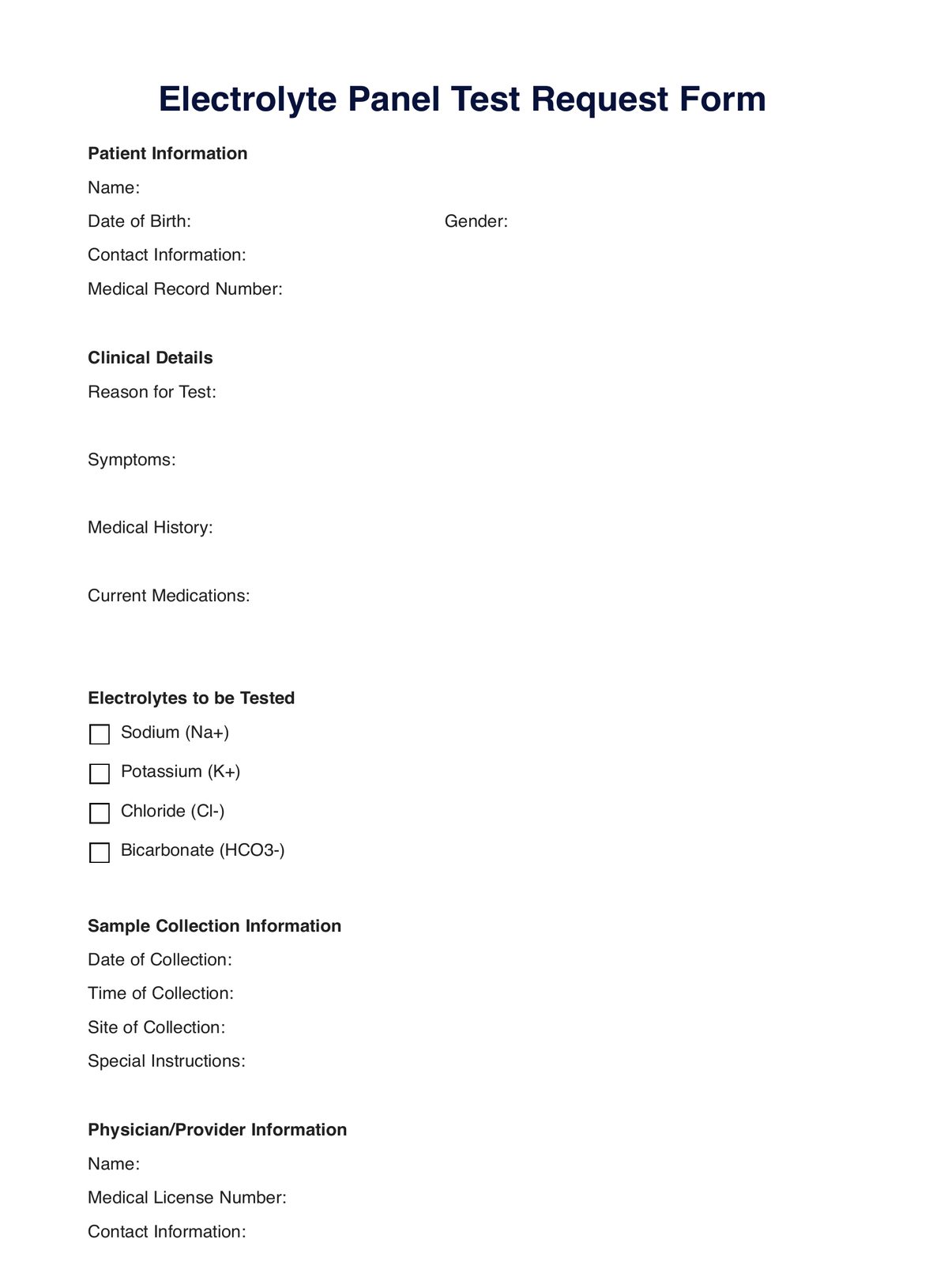
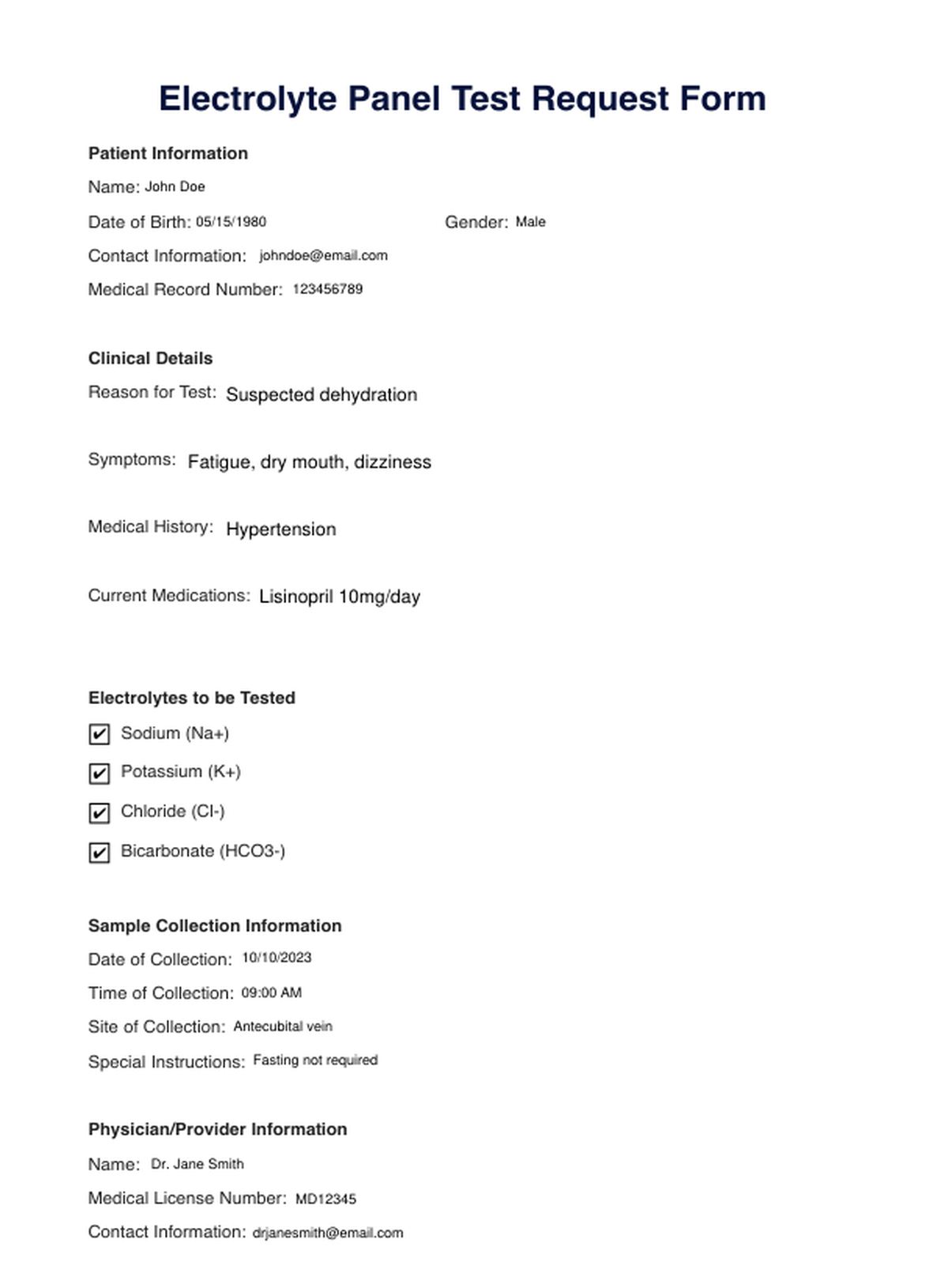


















-template.jpg)

















































































